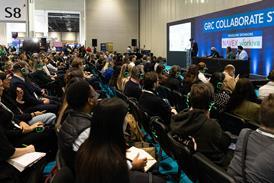New research reveals that US broadband households that own smart home products have on average eight devices.

The findings are a result of a study conducted by Parks Associates, which says the percentage of households owning three or more devices continues to rise. The total now represents five times the number of households that own just one device.
Doorbells and door locks are the hottest smart home categories to date in 2021, with adoption reaching 11% and 9%, respectively.
Elizabeth Parks, President at Parks Associates, said:
“2021 has been a challenging year for consumers and businesses. While supply chain issues continue to be a concern, there is slow but steady growth in the smart home industry
“Traditional and disruptive players continue to introduce new products, grow partnerships, and add features to expand offerings. Privacy issues continue to be in the forefront of consumers’ minds as well as the ability of products to work together and with a unified app.”
The research provides insights into the continued impact of lower cost products, the purchase channel, and purchase intentions for new products and services.
Parks continued:
“The market is in a unique position of dramatic change everywhere – from housing to working to schooling to job switching, consumers are looking closely at technology to provide convenience, comfort, safety, and control.
“Our new research addresses the key metrics needed to understand the shifts in consumer buying and purchasing habits,” Parks added.
The research also observed:
Significant growth occurred in the CE category in US households- smart TVs reached 56% adoption, while smart speakers/displays reached 53%.
As of Q1 2021, the percentage of US broadband households with standalone broadband service increased from 33% in Q1 2018 to 41% in Q1 2021, following the declining popularity of pay-TV bundles. These consumers pay $64 per month on average for standalone broadband service, up from $39 per broadband household in 2011, a 64% growth rate.
82% of US broadband households subscribe to at least one OTT service, up six points year-over-year, while 58% subscribe to a traditional pay-TV service, down four points year-over-year.
Parks said:
“We are excited to provide this new set of services to our clients, who are looking for reliable data and market insights to help understand the transformation that has occurred over the past 18 months.
“It’s a changed world, and we will continue to closely track the adoption of new devices and services by consumers and the implications for future growth in the connected home industries.”












No comments yet